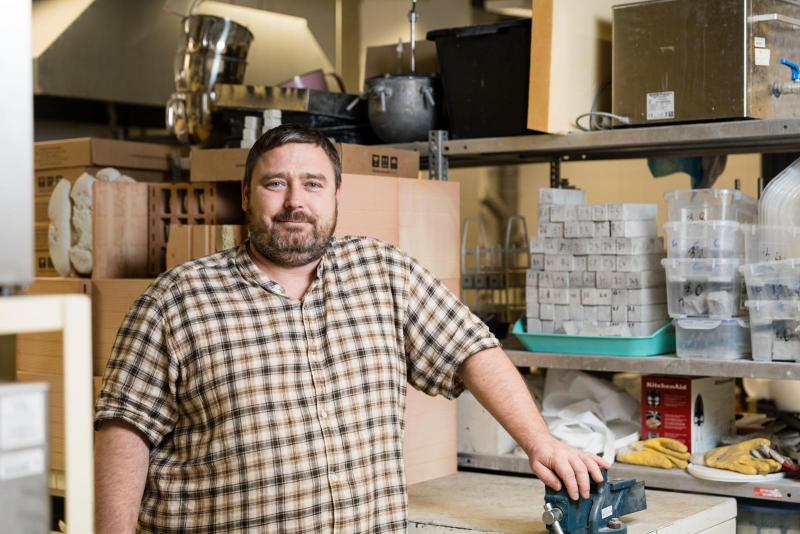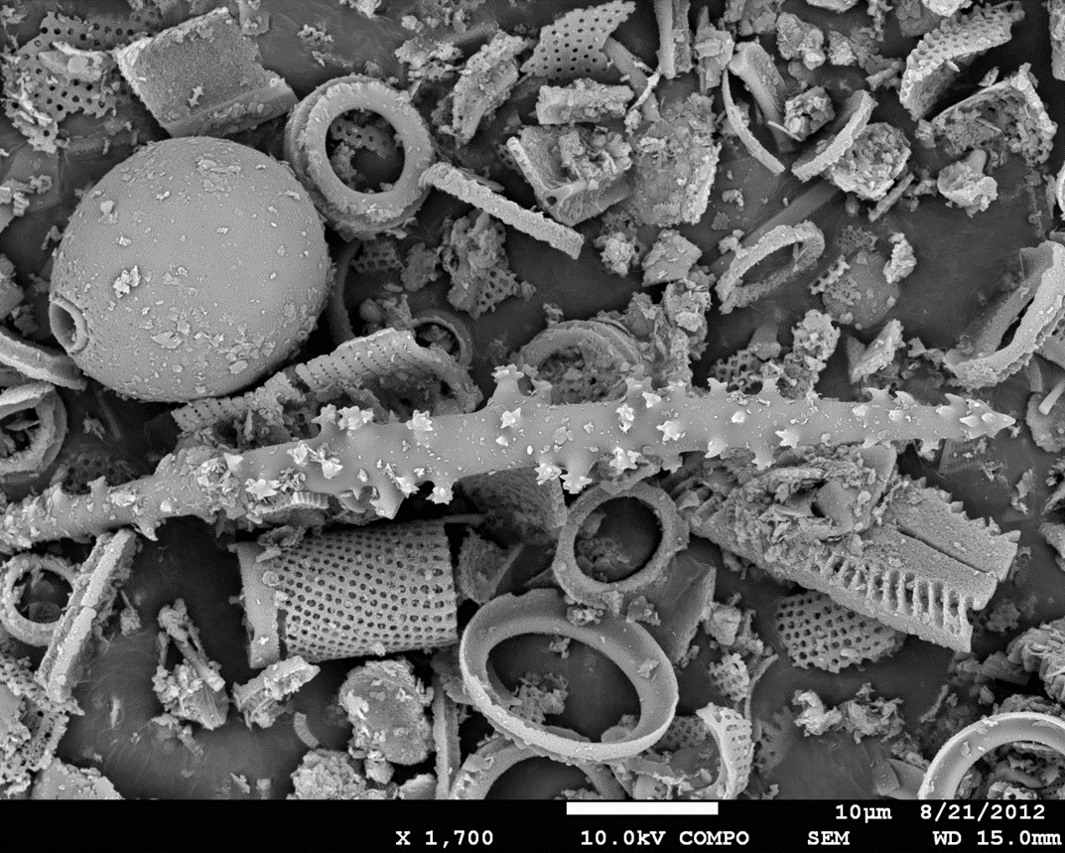Topic
Cement production can be cheaper and more ecological thank to the recipe from FCH BUT

The cement industry generates up to 8 % of global CO2 production. Experts from the Faculty of Chemistry and the Faculty of Mechanical Engineering at BUT are therefore testing a way to reduce the emission burden associated with cement production. As an admixture to Portland clinker, a modified diatomaceous earth was used. Laboratory tests have shown that the new material has properties comparable to traditional cements. However, significantly less CO2 is produced during its production.
Cement production is an energy-intensive process. Therefore, researchers are looking for ways to make its production more efficient and ecological. The most widespread type of cement is currently Portland cement. It is usually produced by burning limestone together with other additives. This creates Portland clinker, to which gypsum is subsequently added in the grinding process. The resulting powder, after mixing with water and aggregate, forms concrete or mortar.
"During this process, carbon dioxide is produced in two ways. For the first time, it is during the burning of limestone itself that when 100 kg of limestone is processed, up to 44 kg of CO2 is released. And then during heating in the furnace - during the production of 1 ton of Portland clinker, approximately 800 kg of CO2 is generated," Tomáš Opravil, the director of the Materials Research Centre of the FCH BUT, explains.
The resulting emission load is much higher – one small cement kiln produces around 1,000-1,200 tons of Portland clinker per day. "Each kilogram of clinker that can be replaced in the cement mixture is reflected in big numbers," Opravil adds.
Therefore, researchers from FCH BUT, in cooperation with FME BUT, began to investigate and test the possibilities of how to prepare an admixture suitable for Portland clinker. The resulting cement must meet the established standards. As the starting raw material, they chose diatomite separate, which is produced during the production of filter diatomaceous earth used, for example, in the food industry.
Diatomaceous earth is a loose natural rock formed by shells of diatoms - unicellular algae. One of the diatomaceous earth deposits is located in Borovany in southern Bohemia. "Waste diatomaceous earth can be treated by firing at approximately 400 to 600 °C in a kiln. A calcined diatomite separate is formed, which is added to Portland clinker during grinding. The result is a cement classified in its class - it is a so-called pozzolanic cement," Opravil explains the process.
In 2021, more than 4,700 kilotons of cement were produced in the Czech Republic, producing approximately 3,100 kilotons of carbon dioxide. "If only 10 % of the volume of produced cement could be replaced with pozzolanic cement with a 30 % content of calcined waste diatomaceous earth, CO2 emissions would be reduced by approximately 150-250 kilotons," Opravil reports.
Laboratory tests in the FME BUT rotary kiln confirmed that diatomite separate can be processed even in larger quantities. Together with a Ph.D. student Valeriia Iliushchenko, the research team used the raw material to test experimental cements that could have a lower environmental impact in the future. "We found that cement with calcined diatomite separate meets the requirements for the strength of the material required by the standards. We tested it on larger bodies and the results were excellent. The material is also very stable in terms of chemical composition. The new type of cement will now also need to be tested in practice," Opravil concludes.
Recycling solar panels? No yet existent. NEW technology from BUT offers a solution
Cheaper, better quality and eco-friendly. FCH BUT researchers create new dextrin adhesive
Bone tissue carriers from 3D printer make bone regeneration more effective. Their formulations are being tested at FCH BUT
„Plastics will always be here, we just need to treat them differently," says the chemist Adriána Kovalčík, who has learned to face challenges
Next-generation ballistic protection: MobiSHIELD from FCH BUT withstands armor-piercing bullets and is easy to install